To some people, all Beetles look the same, whereas others can look at a Bug and tell you exactly what month of production it is. I thought it might be fun and useful to start a little series on Beetles, from early to late and highlight some of the changes over the years to help you identify cars at shows etc. We'll start out quite general and gradually get into more and more detail as we go on. Also, when restoring an old Beetle, if you want to get it all correct then it requires a lot of research to find out exactly when things changed, so that you can put it back to exactly how it was when it left the factory, hopefully this will help in that research too.
We're going to start off with the pre-war production models (prototypes deserve their own section at a later date). So we'll start with the Kdf wagen, as although the term 'Volkswagen' or 'Car for the people' was a widely used generic term for a small car, when the first Beetles were release, Hitler announced that it would be known as the 'Kraft-durch-Freude-Wagen' (Strength through Joy Car) which was abbreviated to Kdf wagen.
From the outside, these were similar to the later split window Beetles, but were usually given to high ranking Nazi officials so usually were very military in appearance. Usually either painted in a flat black or flat sand colour.
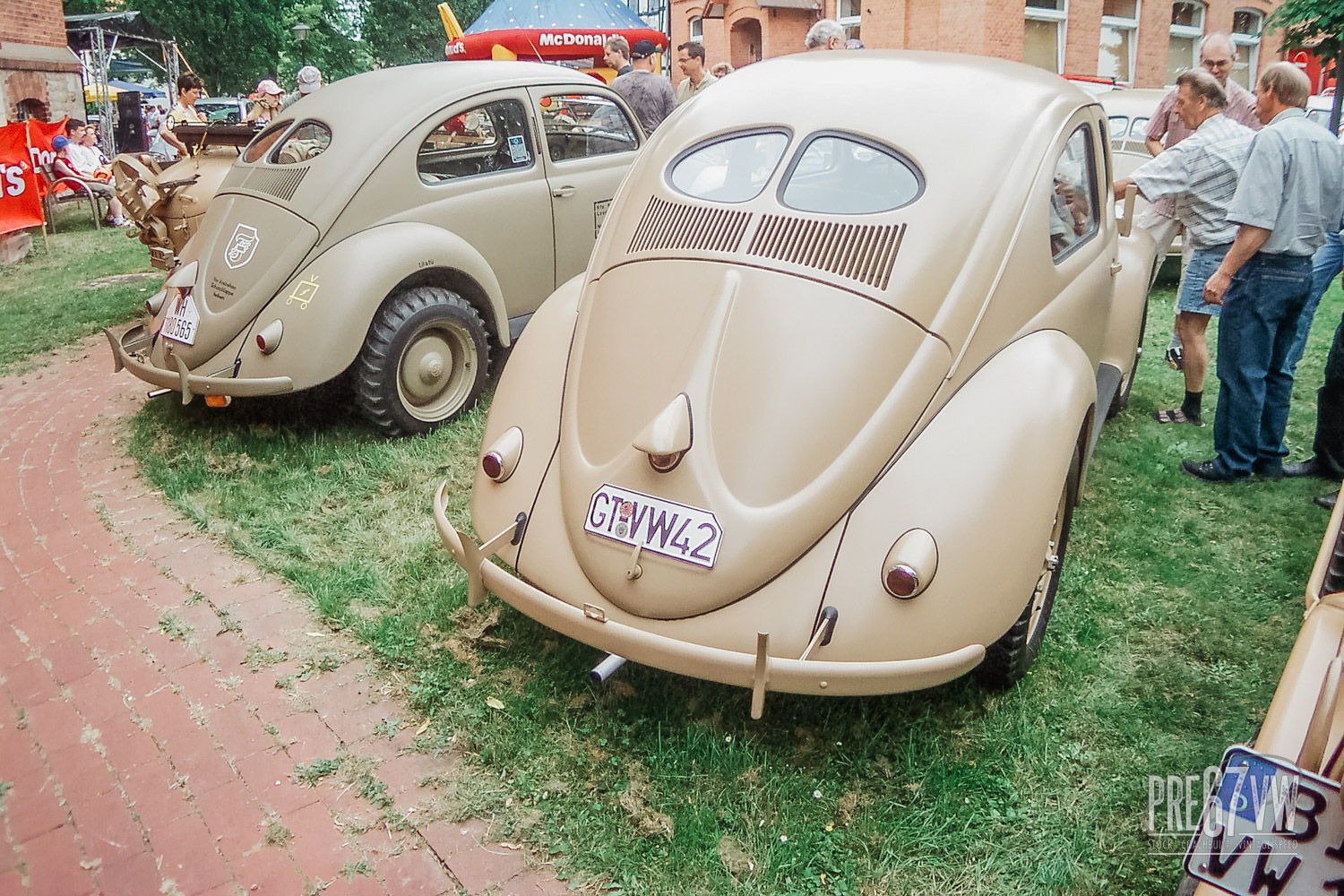
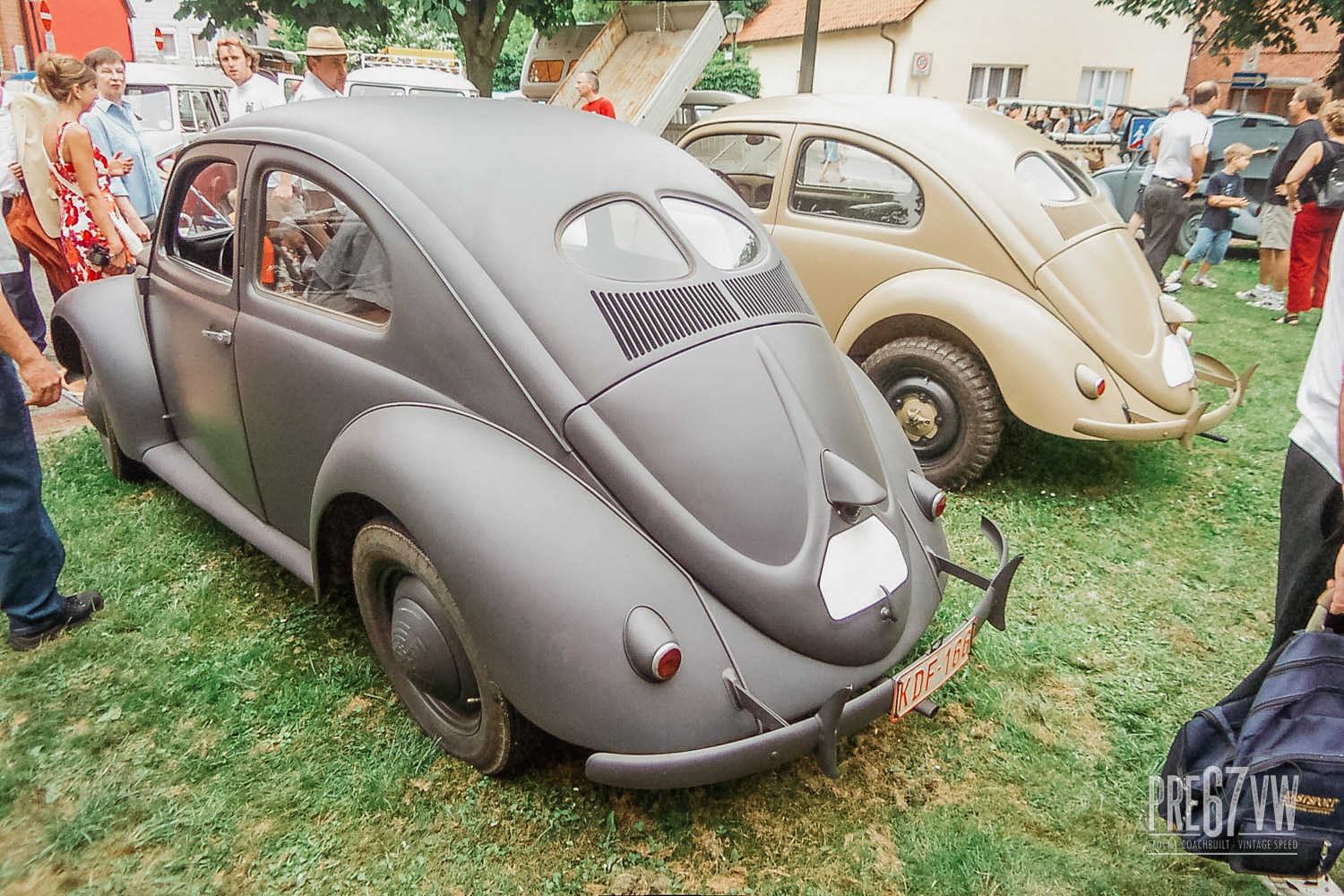
The first Kdf series production cars are quoted as being made in July 1941 and were actually very shiny.
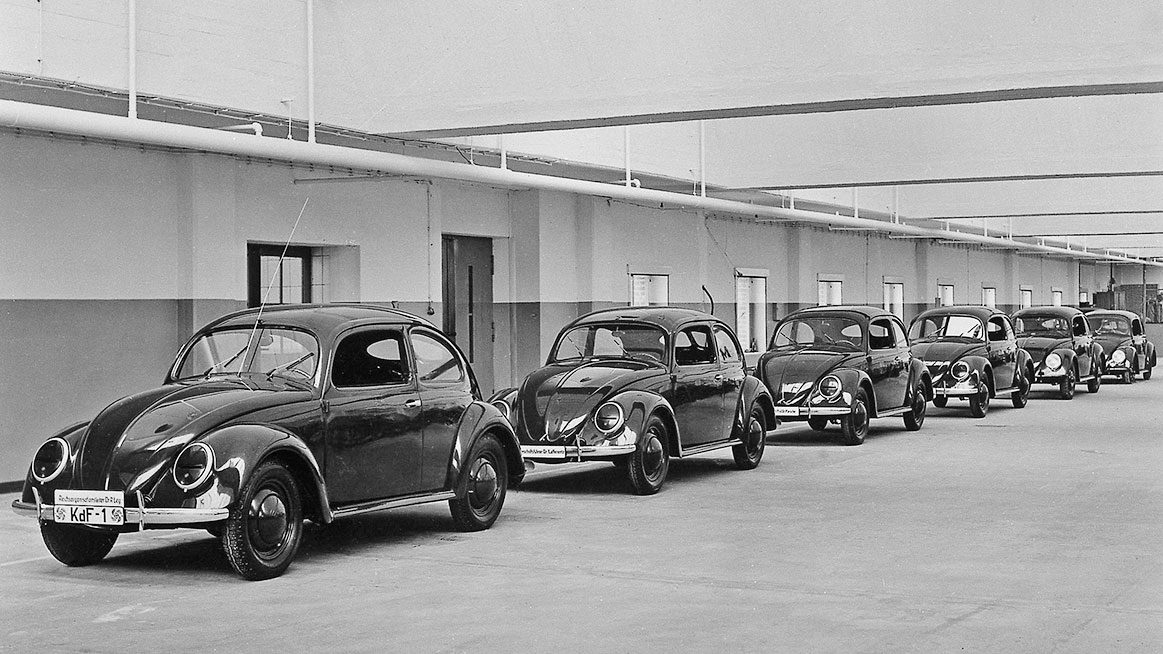
4 wheel drive Beetles were also made during the Kdf period, but production was mostly moved away from the Beetle and concentrated on the military Kubelwagen and Schwimmwagen.
By the end of the war, the American troops moved across the area and liberated the forced labour workforce and looked at setting up a vehicle maintenance at the factory. As Germany was soon divided up into quarters, the factory fell under the control of the British Military Government and the British Army set up their own vehicle maintenance at the plant. Shortly after, Major Ivan Hirst found a more or less complete Kdf car and had it painted British Army green and sent it to his headquarters suggesting that making this car at the factory could provide much needed transport for the Allied forces. An order for 20,000 cars was then recieved and production began in very low numbers shortly after.
Some identifying parts of the Kdf are:
 |
|
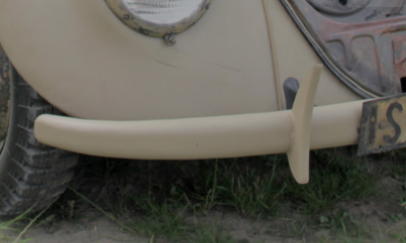 |
- Thin smooth bumpers with 'banana' overriders
|
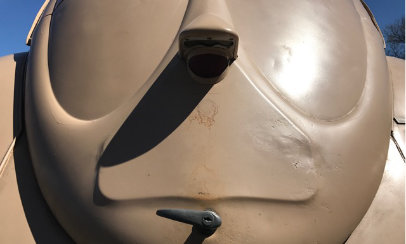 |
- Raised 'pressed' area around number plate,
note that it's not flat along the bottom.
|
 |
- Small tail lights with thick chrome ring
|
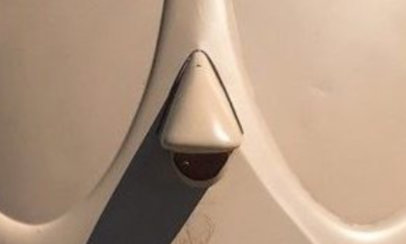 |
- Pyramid/Triangular shaped licence plate light
|
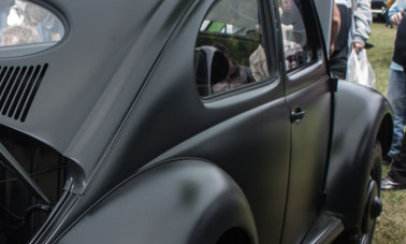 |
|
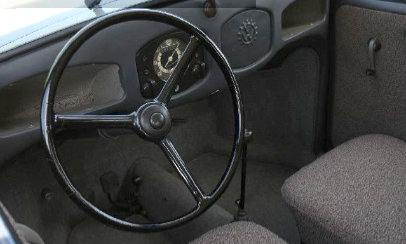 |
- 3 spoke steering wheel
(thicker spokes than the post-war steering wheel)
|
 |
- Round cylinder petrol tank
|
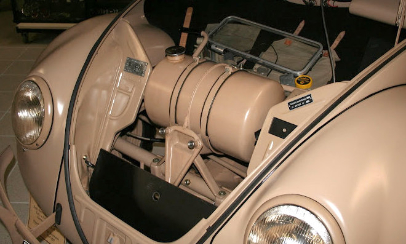 |
- 'Ears' on each side of the spare tyre area.
|
 |
- 'Ribbed' doors
(raised ridge around the door panel)
|
 |
- Rotating front bonnet handle
|
Interior:
- No trim around glove boxes or dash pod
- Black speedo pod with cog logo speedo
- Blanking plate next to speedo with cog logo
- No center ash tray
- Petrol reserve lever offset to the right
- Metal glove boxes
- Oval shaped rear view mirror

Engine:
- Fixed pedestal block
- Seamed fan housing
- 'K' manifold with no jacket
- Smooth top petrol pump
- Large flat air filter
- Coil mounted behind fan housing

Please feel free to add your own info using the comments below
Vintage VW